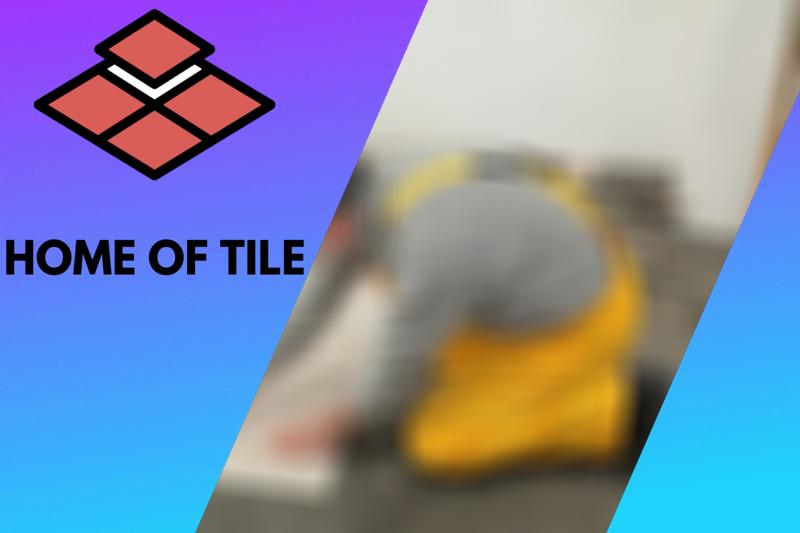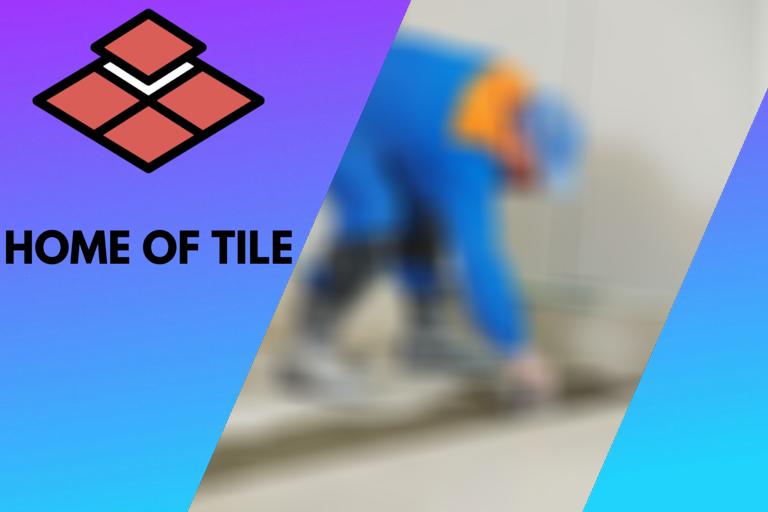Tiling and Sealing/Coating: 9 Things You Should Know
Tiles are an excellent addition to your home. They provide a protective layer against moisture and create an eye-catching, decorative element. Tiles are also durable and easy to clean. Sealing before tiling reduces the porosity of the substrate and protects it in wet rooms. In addition, if you seal the tiles and grout, it will increase the tile’s lifetime. And it makes cleaning even easier. You can easily wipe away dirt and debris without resorting to heavy scrubbing with harsh chemicals. Here are nine things you should know about sealing and tiling.

Contents
- 1 Sealing a Wall Before Tiling, some helpful tips:
- 2 Sealing Chipboard Floor Before Tiling, some helpful tips:
- 3 Sealing Plaster Before Tiling a Shower, some helpful tips:
- 4 Sealing Plasterboard Before Tiling, some helpful tips:
- 5 Sealing Walls Before Tiling, some helpful tips:
- 6 Should I Seal My Basement Floor Before Tiling?
- 7 Tiling Over RedGard, some helpful tips:
- 8 Tiling With mastic, some helpful tips:
- 9 Mist coat Before tiling, some helpful tips:
Sealing a Wall Before Tiling, some helpful tips:
In general, before sealing a wall first, inspect it carefully. Ensure that the substrate is securely screwed and nailed to the studs. Apply a skim coat and roughen it with some sandpaper. Clean the wall with a vacuum, and wipe it with a damp cloth. Then prime the wall. When fully dried, you can start with laying tiles.
In general, sealing a wall before tiling includes the following steps:
- Step 1. Inspect the wall: Ensure the wall is securely screwed and nailed to the studs.
- Step 2. Apply the skim coat: Apply a layer of skim coat.
- Step 3. Use sandpaper: Use some medium-grit sandpaper to rough the substrate. This will improve the bonding of the adhesive.
- Step 4. Vacuum the wall: Use a vacuum to remove all dust and heavy particles left on the wall.
- Step 5. Remove the moisture: Use a rag or a piece of damp cloth to wipe the wall clean and to remove any moisture.
- Step 6. Seal the wall: Prime the wall to seal it. Use a suitable primer like an SBR based one. This ensures a good bond for the tile adhesive. And it prevents potential issues with overly porous or non-porous surfaces.
- Step 7. Apply the adhesive: Apply the adhesive on the dry and primed surface.
- Step 8. Cut the tiles: Dry lay the tiles in the preferred layout. Mark the ones that need cutting. And use a tile cutter to prepare them.
- Step 9. Place the tiles: Install the tiles in the desired pattern.
- Step 10. Apply the grout: Apply a suitable grout and let it dry.
Sealing Chipboard Floor Before Tiling, some helpful tips:
For sealing chipboard flooring before tiling, first, screw the chipboard properly on the substrate. Next, sand the floor to roughen it. This will increase the bonding of the sealer. Seal the floor using a suitable sealer.
In general, sealing chipboard floor before tiling consists of the following steps:
- Step 1. Screw the chipboard: On a firm floor, screw the boards down every 6 inches along each joist. Take care not to puncture electrical wiring and pipes. Screwing it down firmly will stop the boards from moving and help with board deflection. If the floor is still flexing, you need to strengthen it with some additional layers of chipboard or ply.
- Step 2. Sand the floor: Sand the floor to remove wax and dirt. This is even more important when you lay tile on green chipboard.
- Step 3. Seal the chipboard floor: Seal the floor using a suitable acrylic bonding agent and allow it to dry.
- Step 4. Place the tiles: Lay the tiles in the desired pattern. Use a suitable flexible adhesive.
- Step 5. Apply the grout: Use a flexible grout in the color of your choice. And let it dry.
Sealing Plaster Before Tiling a Shower, some helpful tips:
In general, sealing plaster before tiling a shower is essential because of the wet environment. First, let the plaster completely dry, and clean it properly. Then, seal it with a suitable sealer that protects the substrate from moisture. I recommend using SBR for damp and moisture environments, like a shower. Do not use PVA as it is not waterproof. When fully dry, you can lay the tiles. Use epoxy grout to make it as waterproof as possible.
In general, sealing plaster before tiling shower consists of the following steps:
- Step 1. Let the plaster dry: If you have applied the plaster recently, let it dry for at least fourteen days before tiling.
- Step 2. Clean the surface: Remove any dirt and dust.
- Step 3. Seal the plaster: Apply a coating of sealing primer directly on the plaster. I recommend using SBR (Styrene-Butadiene Rubber). It is a water-resistant bonding and sealing agent. It looks a little bit like PVA. But PVA is water-soluble after drying and should not be used for a shower. SBR is fine, and ensures a decent base, and protects the substrate from moisture.
- Step 4. Cut the tiles: Cut the tiles according to the measurements of the shower.
- Step 5. Place the tiles: Lay the tiles using a suitable adhesive.
- Step 6. Apply the grout: Use epoxy grout to finish the job. Regular grout is not water-resistant.
Sealing Plasterboard Before Tiling, some helpful tips:
For sealing the plasterboard before tiling, you have to let the plasterboard dry. Clean the surface with a vacuum. Seal it with a suitable primer. A good option is an SBR based primer for wet environments. And SBR or PVA for non-wet environments. After laying the tiles, grout and let it dry.
In general, sealing plasterboard before tiling consists of the following steps:
- Step 1. Let the plasterboard dry: Ensure that the plasterboard is really dry.
- Step 2. Clean the surface: Use a vacuum to remove any dirt and dust.
- Step 3. Seal the plasterboard: Make the primer: add 1 part PVA to 4 parts water and mix until the PVA has dissolved. Only use PVA for dry rooms, not for wet or moisture environments. For damp and moisture rooms, use an SBR based primer. After applying, let it dry for 15 minutes, and add the second coat. Let it dry overnight.
- Step 4. Cut the tiles: Cut the tiles according to the measurements of the plasterboard.
- Step 5. Place the tiles: Install these tiles with a suitable adhesive.
- Step 6. Apply the grout: Apply a suitable grout and let it dry. Use epoxy grout for wet or moisture environments.
Sealing Walls Before Tiling, some helpful tips:
In general, sealing walls before tiling helps to protect the substrate. Apply a skim coat and use some sandpaper to roughen the wall. Use a vacuum to clean it and wipe the walls with a damp cloth. Use a suitable sealer to prime the wall. For moisture and damp rooms, I recommend using SBR. For dry environments, you can also use PVA. When dried, you can continue with tiling.
Sealing walls before tiling includes the following steps:
- Step 1. Inspect the walls: Ensure that the walls are strong enough to bear the weight of the tiles. Strengthen the wall if needed.
- Step 2. Apply the skim coat: Apply a layer of skim coat.
- Step 3. Use sandpaper: If the substrate is really smooth, use medium-grit sandpaper to roughen it. This will improve bonding
- Step 4. Vacuum the wall: Vacuum the wall to remove dust and other particles left.
- Step 5. Remove the moisture: Use a rag or a piece of damp cloth to wipe the walls to remove any last dirt and moisture.
- Step 6. Seal the walls: Prime the walls to seal them. If you are tiling a wet, damp, or moisture room, I recommend using an SBR based primer. For walls in dry environments, you can also use PVA. This will create a good bond for the tile adhesive and prevent potential issues with overly porous or non-porous surfaces.
- Step 7. Apply the adhesive: Apply the adhesive on the dry and primed surface.
- Step 8. Cut the tiles: Dry lay the tiles according to the layout you want. Mark the tiles that need cutting. Use a tile cutter to cut them.
- Step 9. Place the tiles: Lay the tiles using a suitable adhesive.
- Step 10. Apply the grout: Apply a suitable grout and let it dry. If you lay tile in a wet or damp environment, use epoxy grout. Regular grout is not waterproof.
Should I Seal My Basement Floor Before Tiling?
In general, you should seal your basement floor before tiling. A basement floor often consists of concrete that expands at a different rate than thin-set mortar that is used to lay tiles. I recommend using an elastomeric, crack-prevention membrane. This both seals the floor and protects your tiles.
The membrane prevents water from seeping up through the concrete and into the mortar. It also improves the thin-set curing and prevents future mold or mildew growth. This is especially useful for lower-quality concrete that absorbs a lot of moisture from the ground.
Tiling Over RedGard, some helpful tips:
RedGard helps against moisture and tile cracking. First, apply the RegGard. I recommend always adding at least one undiluted layer of RedGard. When thoroughly dried, you can lay tile on it directly. If you lay tile in a wet or damp environment, use epoxy grout.
Tiling over the RedGard consists of the following steps:
- Step 1. Apply the RedGard: Apply the RedGard to the substrate. RedGard is recommended for waterproofing niches, shelves, and entire shower walls and steam rooms.
- Step 2. Allow the RedGard to dry: Let the RedGard dry for 1 to 2 hours before starting with the next step. If you lay tile directly to the substrate, I recommend applying at least one full coat of undiluted RedGard to the substrate before tiling. This acts as a vapor barrier.
- Step 3. Apply the thin-set over the RedGard: Use a wet sponge to add some moisture to the substrate with the RegGuard. This will improve the bonding between the thin-set and the tiles.
- Step 4. Place the tiles over the RedGard: Place the tiles over the RedGard, using a suitable thin-set.
- Step 5. Apply the grout: Apply the grout over the tiles and let it dry.
Tiling With mastic, some helpful tips:
Mastic is very sticky, quick setting, and it can give off a sharp, strong odor that takes time to dissipate. Therefore, mastic should only be used in dry or damp areas. Please do not use it in wet areas. Or areas that will be under water, like a swimming pool. Mastic tends to be used more on walls, wainscots, and dry backsplashes.
Mist coat Before tiling, some helpful tips:
For using a mist coat, you have to prepare a mist coat, apply the mist coat to the site, apply your topcoat, let it dry for some time, install the tiles over it, and apply the grout.
In general, mist coating before tiling consists of the following steps:
- Step 1. Prepare the mist coat: Prepare a mist coat by mixing paint and water at the ratio of 1 part water and 4 parts paint.
- Step 2. Apply the mist coat: Apply the mist coat over the surface and let it dry.
- Step 3. Apply another layer of mist coat: Apply a second layer. This is needed if you want to go down the belt and braces route.
- Step 4. Install the tiles: When the mist coat is fully dried, you can start with tiling.
- Step 5. Apply the grout: Apply the grout to the tiles.








